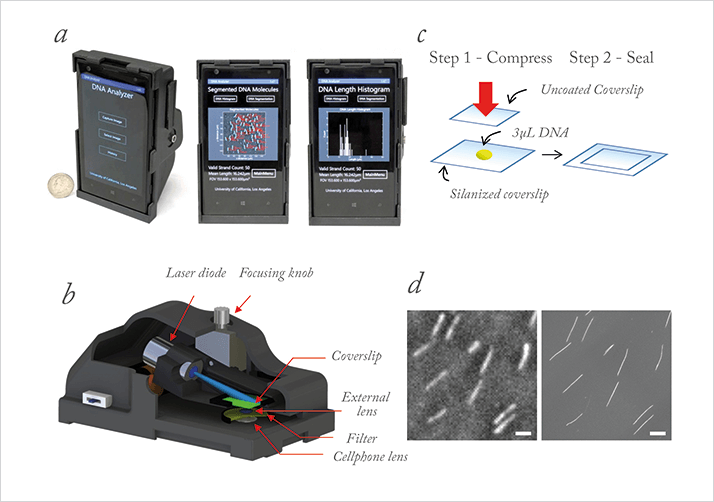What? A fluorescence microscope has been combined with a mobile phone to enable imaging and length quantification of single DNA molecules, with a sizing accuracy of <1 kilobase-pairs (kbp) for 10 kbp and longer DNA samples over a field-of-view of ~2 mm2. A Windows-based application transfers images from the phone to a server for analysis and displays the DNA results. Why? Imaging of single DNA molecules is useful for various applications in physics, chemistry and biology, including the study of diseases associated with genomic alterations, such as cancer and Alzheimer’s disease. Most current systems are expensive and bulky, unable to be used in point-of-care applications or in resource-limited institutions and many developing countries. Mobile phone based imaging is field-portable, cheaper and more accessible.

How? The mobile attachment uses a laser-diode (450 nm, 75 mW) for oblique angle excitation, combined with thin-film interference filters to suppress background noise. A miniature dovetail stage is used for depth-of-focus adjustment and an external lens magnifies the image of the specimen onto the phone’s image sensor chip. The set up creates a very high contrast dark-field. Who? The work was conducted by a team of researchers based in various departments and institutes at the University of California. Where? The research paper has been published as an open access article: Qingshan Wei et al., “Imaging and Sizing of Single DNA Molecules on a Mobile Phone”, ACS Nano, 8 (12), 12725–12733 (2014), doi: 10.1021/nn505821y
